#database software as a service
Explore tagged Tumblr posts
Text
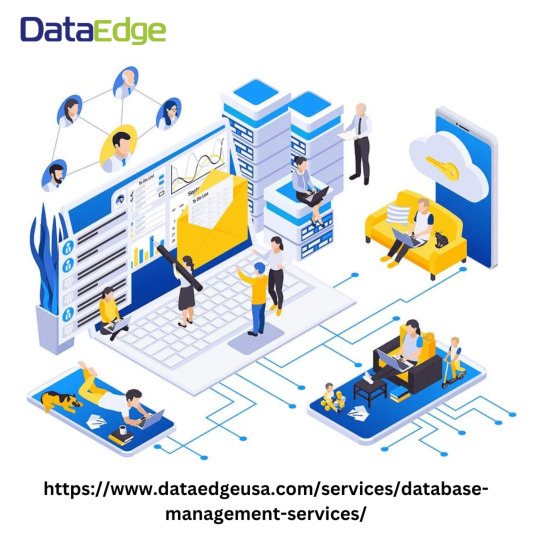
Leading database management provider Dataedge uses a range of contemporary database sources to assist business owners in managing their data and boosting productivity.
#data management#database management#database management company#data management services#database management system#database development services in usa#database software as a service#information management
0 notes
Text
Smarter Data Handling with Expert DB Management 📊💡
Managing large volumes of data? Solvix Technologies offers a reliable database management system that keeps your information organized, secure, and easy to access. From setup to maintenance, we ensure your data works for you—not the other way around. Perfect for businesses that rely on accuracy and performance. Want to simplify your data operations? Let’s connect!
#database management system#database management software#database management services#database managed services provider
0 notes
Text
APIs (Application Programming Interfaces) are the backbone of modern digital ecosystems. They enable seamless interaction between applications, platforms, and services. However, their exposure makes them a prime attack vector. API security testing identifies vulnerabilities in APIs to ensure data confidentiality, integrity, and availability.
#eCommerce software development services#API testing services#database performance testing#automated testing of REST API
0 notes
Text

How to Balance Fixing Performance Issues and Adding New Features in Web Applications?
In today’s digital landscape, web applications are essential for business operations, marketing, and consumer involvement. As organizations expand and consumer expectations rise, development teams are frequently confronted with the difficult task of balancing two key priorities: addressing performance issues and introducing new features.
While boosting performance improves the user experience and increases efficiency, new features are required to remain competitive and meet market demands. Prioritizing one over the other, on the other hand, might have negative consequences—performance concerns can lead to a poor user experience while failing to innovate can result in a competitive disadvantage.
This blog delves into how to balance improving performance and introducing new features to web apps, allowing firms to satisfy technical and market demands efficiently.
Why Balancing Performance and New Features Is Crucial
A web application‘s success depends on both its performance and its features. However, relying entirely on one might result in imbalances that impair both user happiness and business progress.
Performance:Performance is an important component that directly influences user retention and happiness. Users can become frustrated and leave if the application has slow loading times, crashes, or problems. Ensuring that your web application runs smoothly is essential since 53% of mobile consumers would quit a site that takes more than three seconds to load.
New Features:On the other hand, constantly adding new features keeps users interested and promotes your company as innovative. New features generate growth by attracting new consumers and retaining existing ones who want to experience the most recent changes.
The dilemma is deciding when to prioritize bug fixes over new feature development. A poor balance can harm both performance and innovation, resulting in a subpar user experience and stagnation.
Common Performance Issues in Web Applications
Before balancing performance and features, it’s important to understand the common performance issues that web applications face:
Slow Load Times: Slow pages lead to higher bounce rates and lost revenue.
Server Downtime: Frequent server outages impact accessibility and trust.
Poor Mobile Optimization: A significant portion of web traffic comes from mobile devices and apps that aren’t optimized for mobile fail to reach their potential.
Security Vulnerabilities: Data breaches and security flaws harm credibility and user trust.
Bugs and Glitches: Software bugs lead to poor user experiences, especially if they cause the app to crash or become unresponsive.
Strategic Approaches to Fixing Performance Issues
When performance issues develop, they must be handled immediately to guarantee that the online application functions properly. Here are techniques for improving performance without delaying new feature development:
Prioritize Critical Issues:Tackle performance issues that have the most significant impact first, such as slow loading times or security vulnerabilities. Use analytics to identify bottlenecks and determine which areas require urgent attention.
Use a Continuous Improvement Process:Continuously monitor and optimize the application’s performance. With tools like Google PageSpeed Insights, you can track performance metrics and make incremental improvements without major overhauls.
Optimize Database Queries:Slow database queries are one of the leading causes of web app performance issues. Optimize queries and ensure that the database is indexed properly for faster access and retrieval of data.
Reduce HTTP Requests:The more requests a page makes to the server, the slower it loads. Minimize requests by reducing file sizes, combining CSS and JavaScript files, and utilizing caching.
5. Leverage Caching and CDNs: Use caching strategies and Content Delivery Networks (CDNs) to deliver content quickly to users by storing files in multiple locations globally.
Why Adding New Features is Essential for Growth
In the rapidly changing digital environment, businesses must continually innovate to stay relevant. Adding new features is key to maintaining a competitive edge and enhancing user engagement. Here’s why:
User Expectations:Today’s consumers expect personalized experiences and constant innovation. Failure to add new features can lead to customer churn, as users may feel your web application no longer meets their needs.
Market Differentiation:Introducing new features allows your application to stand out in the marketplace. Unique functionalities can set your app apart from competitors, attracting new users and increasing customer loyalty.
Increased Revenue Opportunities:New features can lead to additional revenue streams. For example, adding premium features or new integrations can boost the app’s value and lead to increased sales or subscription rates.
4. Feedback-Driven Innovation: New features are often driven by user feedback. By continuously developing and adding features, you create a feedback loop that improves the overall user experience and fosters customer satisfaction.
Read More: https://8techlabs.com/how-to-balance-fixing-performance-issues-and-adding-new-features-in-web-applications-to-meet-market-demands-and-enhance-user-experience/
#8 Tech Labs#custom software development#custom software development agency#custom software development company#software development company#mobile app development software#bespoke software development company#bespoke software development#nearshore development#software development services#software development#Website performance testing tools#Speed optimization for web apps#Mobile-first web app optimization#Code minification and lazy loading#Database indexing and query optimization#Agile vs Waterfall in feature development#Feature flagging in web development#CI/CD pipelines for web applications#API performance optimization#Serverless computing for better performance#Core Web Vitals optimization techniques#First Contentful Paint (FCP) improvement#Reducing Time to First Byte (TTFB)#Impact of site speed on conversion rates#How to reduce JavaScript execution time#Web application performance optimization#Fixing performance issues in web apps#Web app performance vs new features#Website speed optimization for better UX
0 notes
Text
FileMaker Custom Development: Create Robust Custom Applications with Kbizsoft
Discover how Kbizsoft’s expert FileMaker custom development services can help you design tailored, robust applications. From idea to implementation, we deliver solutions that enhance productivity and efficiency. To learn more about our custom FileMaker development process contact us today.
#FileMaker Development#Custom FileMaker Applications#FileMaker Solutions#FileMaker Customization#FileMaker App Development#Custom Software Development#Robust Custom Applications#FileMaker Experts#FileMaker Development Services#KBizSoft FileMaker Solutions#Database Development#Business App Development#FileMaker Solutions for Business#FileMaker Developers#FileMaker Application Design#develop#game development#marketing#mobile app development#personal development#software development#technology#web development
1 note
·
View note
Text
Databricks vs. Snowflake: Key Differences Explained
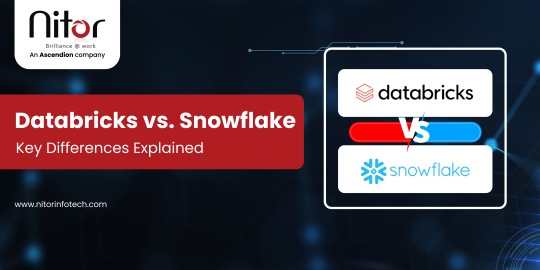
What if businesses could overcome the challenges of data silos, slow query performance, and limited real-time analytics? Well, it's a reality now, as data cloud platforms like Databricks and Snowflake have transformed how organizations manage and analyze their data.
Founded in 2012, Snowflake emerged from the expertise of data warehousing professionals, establishing itself as a SQL-centric solution for modern data needs. In contrast, Databricks, launched shortly after in 2013, originated from the creators of Apache Spark, positioning itself as a managed service for big data processing and machine learning.

Scroll ahead to discover everything about these platforms and opt for the best option.
Benefits of Databricks and Snowflake
Here are the benefits that you can enjoy with Databricks:
It has been tailored for data science and machine learning workloads.
It supports complex data transformations and real-time analytics.
It adapts to the needs of data engineers and scientists.
It enables teams to work together on projects, enhancing innovation and efficiency.
It allows for immediate insights and data-driven decision-making.
In contrast, here are the benefits you can experience with Snowflake:
It is ideal for organizations focused on business intelligence and analytics.
It helps with storage and the compute resources can be scaled separately, ensuring optimal performance.
It efficiently handles large volumes of data without performance issues.
It is easy to use for both technical and non-technical users, promoting widespread adoption.
It offers a wide range of functionalities to support various industry needs.
Note: Visit their website to learn more about the pricing of Databricks and Snowflake.
Now, let’s compare each of the platforms based on various use cases/features.
Databricks vs. Snowflake: Comparison of Essential Features
When comparing essential features, several use cases highlight the differences between Databricks and Snowflake. Here are the top four factors that will provide clarity on each platform's strengths and capabilities:
1. Data Ingestion: Snowflake utilizes the ‘COPY INTO’ command for data loading, often relying on third-party tools for ingestion. In contrast, Databricks enables direct interaction with data in cloud storage, providing more flexibility in handling various data formats.
2. Data Transformation: Snowflake predominantly uses SQL for data transformations, while Databricks leverages Spark, allowing for more extensive customization and the ability to handle massive datasets effectively.
3. Machine Learning: Databricks boasts of a mature ecosystem for machine learning with features like MLflow and model serving. On the other hand, Snowflake is catching up with the introduction of Snowpark, allowing users to run machine learning models within its environment.
4. Data Governance: Snowflake provides extensive metadata and cost management features, while Databricks offers a robust data catalog through its Unity Catalog (it is still developing its cost management capabilities).
In a nutshell, both Databricks and Snowflake have carved their niches in the data cloud landscape, each with its unique capabilities. As both platforms continue to evolve and expand their feature sets, the above read will help businesses make informed decisions to optimize their data strategies and achieve greater insights.
Feel free to share this microblog with your network and connect with us at Nitor Infotech to elevate your business through cutting-edge technologies.
#data bricks#data warehouse#database warehousing#data lake#snowflake data#software development#snowflake pricing#snowflake#software engineering#blog#software services#artificial intelligence
0 notes
Text
WhatsApp Bulk Message Software
Learn about WhatsApp bulk message software. Discover the power of WhatsApp bulk message software, a tool designed to streamline communication for businesses.
The WhatsApp bulk message software has become a strong tool for organizations that want to enhance their communication strategy. Due to its vast global user base of more than 2 billion people, WhatsApp offers matchless chances for connecting with customers, clients, and employees.
WhatsApp Bulk Message Software is an ideal solution that provides communication options for organizations undertaking marketing campaigns as well as those sending out urgent notifications to different people but might have a challenge of reaching everyone at once.
What is WhatsApp Bulk Message Software?
The software for bulk messaging on WhatsApp is a program meant to disseminate many messages to multiple recipients simultaneously. Different from the old way of sending separate messages, this tool makes the whole process automatic, thus reducing the time spent and energy utilized.
It is used by companies to communicate with a wider audience through promotions, updates, notifications, or any other kind of communication.
Key Features of WhatsApp Bulk Message Software
1. Automated Message Sending
With just a few clicks on the software, hundreds or even thousands of messages can be sent in no time at all. For companies that need to contact large numbers of people quickly and effectively, this functionality is especially useful.
2. Personalization
Most bulk message-sending applications provide personalization choices, thus enabling one to adjust every text using the addressee’s name or other details about him/her. This can lead to better customer involvement and create the impression that it is not just a common announcement.
3. Multimedia Support
WhatsApp bulk message software comes with multimedia file support, which allows users to send images, video clips, and other documents together with text messages. This makes it easier for businesses to deliver complex information or offer a more complete experience.
4. Scheduling
Users can plan and send messages at particular dates and times with the help of scheduling features. This is particularly useful for campaigns that involve time-sensitive activities, like limited-time promotions or event reminders.
5. Reporting and Analytics
This information may assist companies in evaluating the efficiency of their communication method and making necessary changes. Some advanced instruments give analytical results for monitoring message delivery, basic rate calculation, and responses received.
6. Contact Management
It’s often known that the software entails contact management functionalities, which enable users to order, add, and handle their address lists easily. Creating groups, segmenting audiences, and sending messages to proper recipients are some of them.
Conclusion
Servicing businesses has been transformed through WhatsApp bulk message software. This tool has given room for the proper streamlining of communication channels, increasing client affinity, and realizing marketing objectives.
In the course of these things, however, one must note the ethical and responsible manner of enabling bulk messaging while considering user privacy and providing useful content. The future will see WhatsApp bulk messages as an integral part of a global scale among digital media platforms.
#data base india#chennai mobile number data#bulk database#new mobile number data#mobile number list#doctor email data#bulk data base#email data base#bulkdatabase#emaildatabase#whatsapp messages#whatsapp business api شرح#whatsapp marketing#bulk whatsapp messages#bulk whatsapp software#bulk whatsapp provider#bulk sms service provider#bulk email data base
0 notes
Text

Lead Myntra provide bulk WhatsApp marketing software for improve your business to go to the next level with mass message sender techniques. Research shows that more than 97% of people use the WhatsApp application to send messages more than 13 times a day.
https://leadmyntra.com/
#WhatsApp marketing#WhatsApp bulk message#WhatsApp marketing services#WhatsApp marketing tool#WhatsApp web panel price#malaysia#singapore#leadmyntra#bulk whatsapp software#benfits of whatsapp bulk message#bulk database marketing
1 note
·
View note
Text
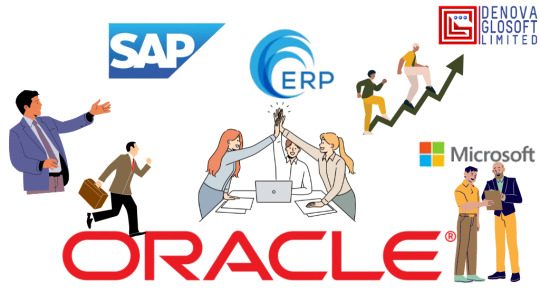
#oracle#oracle clouds#oracle database#oracle netsuite#it services#sap software service#sap solutions#software development#sap services
0 notes
Text

Transform your data management experience with Azure Database Services. Harness the scalability, reliability, and flexibility of Azure Cloud databases to streamline operations and organize, access, and optimize your business data. Tap the link to know more: https://www.qservicesit.com/azure-databases/
#microsoftazure#azure software development#azure app development#azure database services#azure database migration service
0 notes
Text
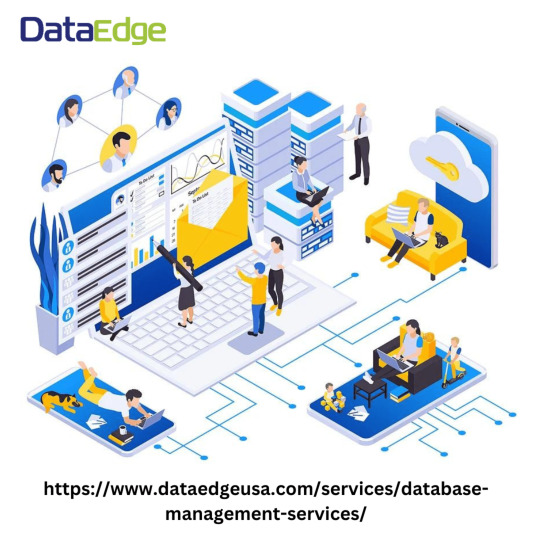
Leading database management provider Dataedge uses a range of contemporary database sources to assist business owners in managing their data and boosting productivity.
#data management#database management#database management company#data management services#database management system#database development services in usa#database software as a service#information management
0 notes
Text
The Data Migration Services
Ever wonder how data moves from one system to another without any problems? That is how data migration works its magic. It is the process of moving data between various computer systems, formats, and storage types. It is impossible to overestimate the significance of this service given how much businesses depend on timely and accurate data to run effectively.
Northwest Database Services Overview
Northwest Database Services is a leading provider of data migration services. They specialize in helping businesses move their data securely and efficiently. With years of experience in the industry, they have gained a reputation for excellence and reliability.

Benefits of Choosing Northwest Database Services for Data Migration
Choosing Northwest Database Services for your data migration needs comes with several benefits. Firstly, their team of experts has extensive experience in handling complex data migration projects. They also prioritize security, ensuring that your data remains safe throughout the migration process. Lastly, their services are cost-effective, providing excellent value for your investment.
Types of Data Migration Services Offered
Northwest Database Services offers a wide range of data migration services to meet the diverse needs of their clients. Some of the most common types of migration services they offer include:
Best Practices for Successful Data Migration
To ensure a successful data migration, it's essential to follow best practices such as thorough planning, regular backups, and rigorous testing and validation.

Case Studies: Successful Data Migration Projects by Northwest Database Services
Northwest Database Services has successfully completed numerous data migration services projects for clients across various industries. These case studies showcase their expertise and the positive impact of their services on businesses.
Customer Testimonials
Here's what some of their satisfied clients have to say about their experience with Northwest Database Services.
Get In More Information :
Business Name: Northwest Database Services
Website: https://nwdatabase.com/
Phone: 3608418168
0 notes
Text
#Field Service management Software Development company#Software Development company in Chennai#Software development Company in India#Healthcare software development#Software Development Company in India#Medical database software Development#ERP Software development#Enterprise resource planning
0 notes
Text
Understanding Database Sharding
Imagine you have a library with thousands of books, and finding a specific one becomes time-consuming. To speed things up, you decide to split the collection into smaller sections based on genres, making it quicker to locate any book.
Similarly, Database Sharding divides a large database into smaller, more manageable pieces to improve performance and scalability.
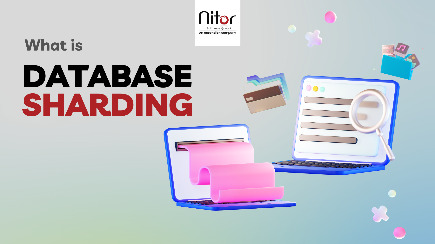
Fig: Database Sharding Banner Image
What is a Sharding Database
Database sharding is like storing a huge database across several machines. Imagine one server trying to handle all the data—it can only do so much before it starts slowing down. By splitting the data into smaller chunks, or shards, and storing these across multiple servers, we can manage and process large amounts of data more efficiently.
As an application grows, more users and data can turn the database into a bottleneck, slowing everything down and frustrating users. Sharding also helps by allowing parallel processing of these smaller datasets, keeping things running smoothly even as demand increases.
Scaling Techniques in Database Sharding
Scaling database sharding involves several techniques to ensure efficient management and distribution of data. Here are some key methods:
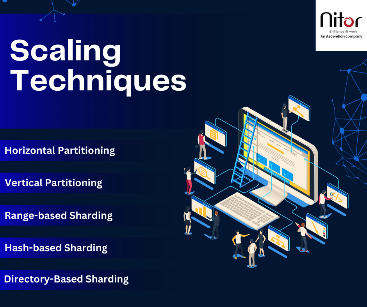
Horizontal Partitioning
This technique involves splitting the data across multiple servers based on a sharding key, such as user ID or geographic region. Each server, or shard, contains a subset of the overall data. This approach allows the system to scale out by adding more servers, thereby distributing the load and improving performance and reliability.
Vertical Partitioning
This technique divides the database into smaller tables, each stored on different servers. Each server handles a specific aspect of the application, such as user profiles, transactions, or product details. By separating the data based on functionality, vertical partitioning can improve query performance and make it easier to manage and scale specific parts of the application independently.
Range-Based Sharding
Distributes data management based on a continuous range of values. For example, user IDs 1-1000 on one shard, and 1001-2000 on another.
Hash-Based Sharding
Uses a hash function on the sharding key to evenly distribute data across shards. This helps avoid uneven data distribution.
Directory-Based Sharding
Maintains a lookup table or directory that maps each data item to its corresponding shard. This allows flexible and dynamic distribution of data.
Each technique has its advantages and is chosen based on the specific needs and growth patterns of the application.
Benefits of Database Sharding
Database sharding offers several benefits:
Improved Performance: By distributing the data across multiple servers, each server handles a smaller subset of the data, reducing the load and improving query response times.
Scalability: Sharding allows horizontal scaling, meaning you can add more servers to handle the increased load, making it easier to scale the database as the application grows.
Increased Availability: With data distributed across multiple servers, the system can continue to operate even if one shard fails. This redundancy enhances the overall availability and reliability of the application.
Efficient Resource Utilization: Different shards can be optimized for specific workloads, allowing better use of hardware resources. For instance, high-traffic shards can be allocated more resources, while less busy shards use fewer resources.
Reduced Maintenance: Smaller databases are easier to back up, restore, and maintain. Sharding breaks down the database into more manageable pieces, simplifying administrative tasks.
Factors to consider before Sharding
Before deciding to shard your database, consider the following factors:
Database Size: Sharding is typically suitable for large databases that have outgrown the capacity of a single server.
Traffic Patterns: If your database experiences uneven traffic patterns, sharding can help balance the load.
Growth Projections: If significant future scaling is anticipated, sharding can be a beneficial strategy.
Complexity: Sharding introduces additional complexity to your database architecture and requires careful planning and ongoing maintenance.
Cost: Sharding can be costly due to the need for extra hardware resources and infrastructure to support multiple servers.
So, database sharding offers both advantages and challenges, and it is important to determine if it aligns with your application’s requirements.
To know more about database management, reach out to us at Nitor Infotech.
#Database Sharding#Nitor Infotech#software development company#database management#big data#data modeling#data architecture#software services
0 notes
Text
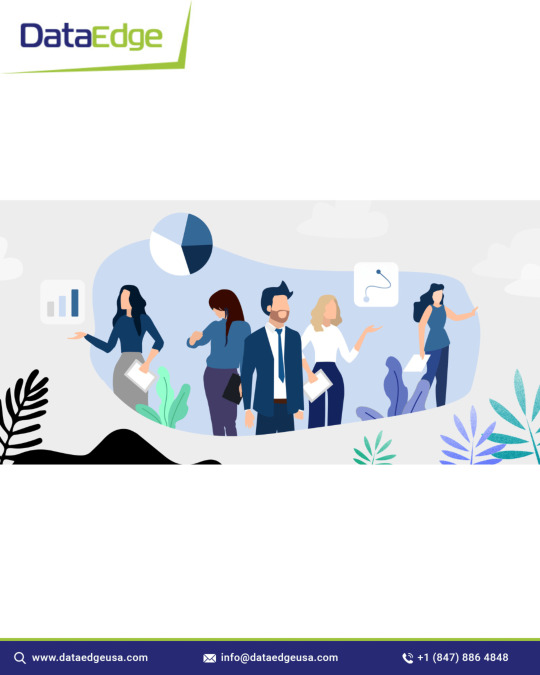
From application development and maintenance support to ERP and CRM services, data analytics, cloud computing, DevOps services, software testing and QA, database management, staffing, and IT recruitment, DataEdge offers IT consulting and staffing services to a broad range of industries across the United States.
#application development services in usa#salesforce services in usa#software testing services#cloud services in usa#crm consulting services#devops services in usa#staffing and recruiting#database management services
0 notes
Text
Understanding Data Encryption and Classification for Effective Data Rights Management
Introduction:
Nowadays, data security has become a top priority. As the data is generated and shared more exponentially, the safeguarding of sensitive information has become more challenging while being crucial. Data encryption and classification are the two major aspects of data rights, and they play a leading part in protecting information from involuntary or Best geofence storage service and in compliance with privacy laws.

What is Data Encryption?
Data encryption is like putting your information in a safe, but it is a digital safe. This process entails encoding the plain text into an illegible text referred to as ciphertext with a specific algorithm and key. This procedure makes sure that even if somebody who's not authorized is granted access to the data, they will still not be able to decrypt it without the corresponding decryption key.
Imagine that you want to send a secret message to your friend. Instead of writing the message clearly, you mix it up using some secret code that only you and your friend know. Without the key, any interposition would only yield nonsensical letters.
What is Data Classification?
Data classification is grouping the data according to its level of sensitivity and significance. It also allows organizations to categorize their data holdings and decide which data needs to be protected at what level. Classification is usually done by tagging data with a label that identifies its security requirements or handling process.
Data classification is like putting your stuff into different boxes. All your important documents might go into a folder, another for pictures and one for miscellaneous notes. Every folder is labelled to indicate what paperwork is inside of it and how you should handle it.
Effective Data Rights Management
Encrypting and classifying data are crucial in the context of the formulation of advice on the management of data rights with the objective of attaining maximum data protection and regulatory compliance. Here's how they work together, Here's how they work together:
Data Identification:
This high classification facilitates to define the sensitive data that needs to be encrypted conveniently. By splitting the data into groups according to the application of encryption technologies, information systems can address the shortage of encryption means and distribute the resources in a reasonable way.
Access Control:
Encryption is a safeguard against unpermitted access, and people with classification rights choose who to give access to encoded information. The access controls can build on data classification labels so that only the laid-out clearance users, possessing the proper clearance can unscramble the cipher and access sensitive information.

Conclusion:
The use of data encryption and classification forms part of comprehensive data rights management plans. Encryption works to make Best Database Backup Services only accessible to authorized people. While at the same time, sensitivity labels can be used to classify easy-to-reach data from data that requires more protection. Organizations can provide an appropriate environment for data if they combine these approaches. They can take care of risks, protect confidential information, and be consistent with data privacy regulations.
#Best object storage software#Best Database backup Services#IT Security services#Cyber security company
0 notes